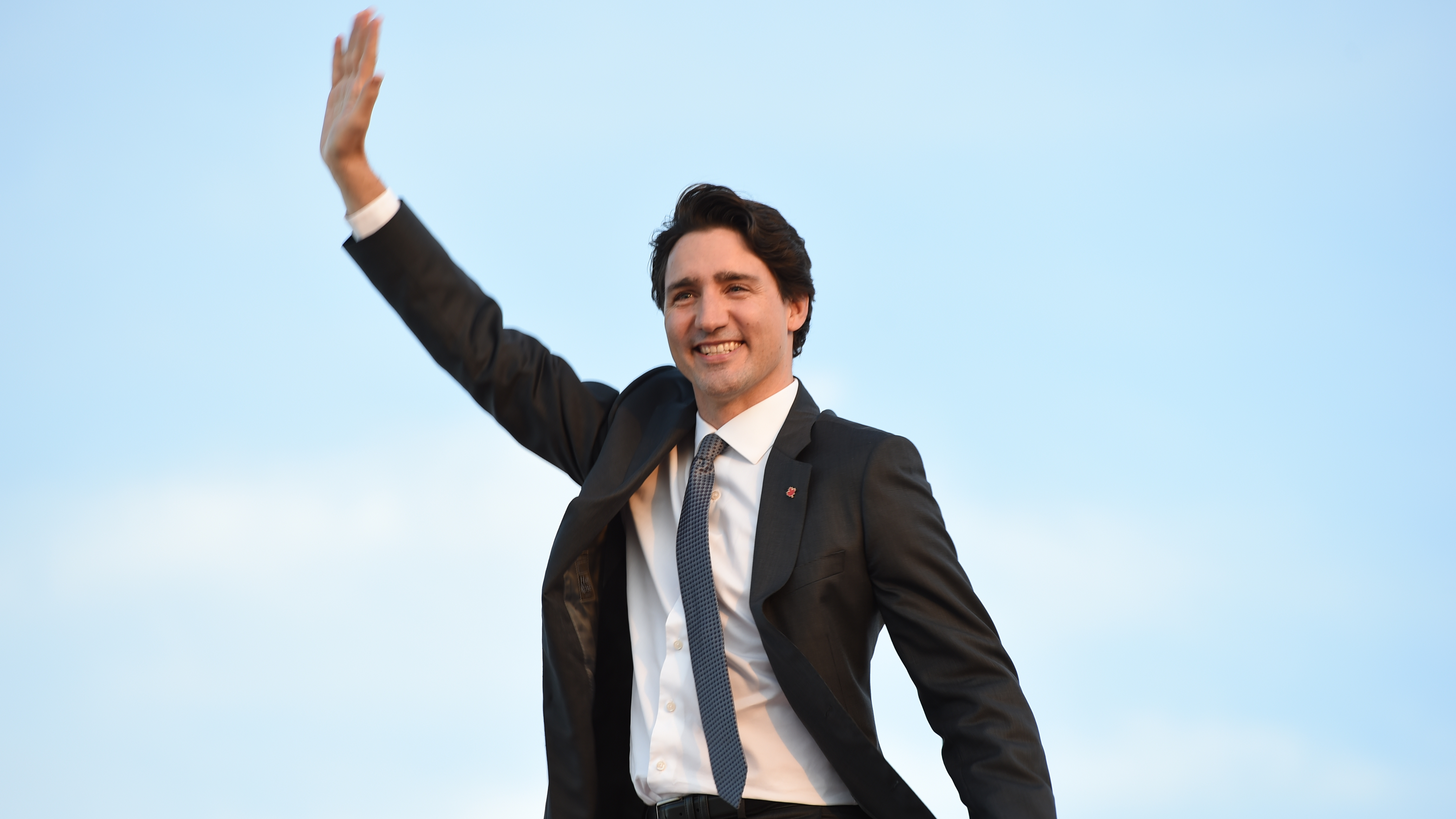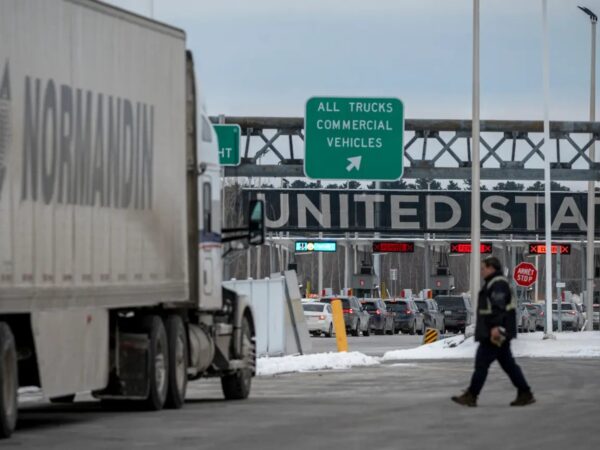
The Great Lakes flew below the radar once again in Canada’s latest federal election, earning barely a mention among party leaders in televised debates, stump speeches or party platforms.
But despite the lack of attention paid to the region and its $6 trillion economy, the broader issue of environmental protection was center stage for the first time in more than a decade.
“The environment on the whole was a top issue for voters,” said Kelsey Scarfone, water manager with Canadian environmental organization Environmental Defence. “We know that people overwhelmingly voted for parties with climate change or environmental plans. And so we know there is this renewed mandate to safeguard the environment for the federal government.”
The environment as a voting issue was synonymous this election with a heated debate over the future of the governing Liberal Party’s carbon-pricing blueprint.
Introduced in 2018, the plan would require all Canadian provinces and territories to charge polluters a direct price on carbon emissions of $10 per tonne (2204.62 pounds) – rising $10 each year to $50 per tonne by 2022 – or to have a cap-and-trade program in place that matches the federal government’s emissions reduction target.
Conservative leader Andrew Scheer repeatedly promised on the campaign trail to kill the Liberal “carbon tax” and build energy corridors across the country to get oil and gas from Alberta to eastern markets in the Great Lakes basin.
Ontario’s Progressive Conservative Premier Doug Ford, meanwhile, signalled last month his government intends to fight the Liberal carbon-pricing plan all the way to Canada’s Supreme Court.
In late October, Liberal leader and incumbent Prime Minister Justin Trudeau’s party won re-election to the House of Commons, albeit 13 seats shy of what is needed to form a majority government. Now, the Liberals will need to find support from opposition members to pass legislation.
According to Scarfone, one of Trudeau’s first priorities for the Great Lakes should be to strengthen the Canada-Ontario Great Lakes Agreement, the country’s plan for how it intends to meet the promises it has made with the United States for protecting these shared waterways.
Scarfone told Great Lakes Now that previous iterations of the agreement have diluted both Canada and Ontario’s responsibilities, leaving both governments on the hook for less real, actionable measures to protect and restore the Great Lakes.
“We want to make sure that [the agreement] is robust and specific about how we’re going to execute all of the things that both governments need to do to meet our obligations,” she said.
Money can bring people together to tackle the challenges communities are facing, from algal blooms to invasive species, Scarfone said. And it may be time for Canada to follow America’s lead in creating something like the Great Lakes Restoration Initiative, which receives $300 million in annual funding to ensure everything from safe drinking water to cleaning up legacy Areas of Concern throughout the basin.
“There’s a great body of work out there for Canadian politicians to look at when it comes time to think about upping our investment and ambition around the Great Lakes,” Scarfone said.
This current, watered-down version of the Canada-Ontario Great Lakes Agreement is part of a broader lack of protections on the books for water throughout the basin, a weakening of rules that has led to the over-extraction of water for profit, said Vi Bui, water campaigner with the Council of Canadians.
“Nestle and other water-bottling companies have made millions extracting ground and surface water in the basin for commercial bottling and export,” she told Great Lakes Now. “Protecting public freshwater and prioritizing water for community use over corporate profit will have to be fully embraced” by the new government.
Bui also pointed to the new federal government’s need to take action on the climate crisis as part of a full suite of protections for the Great Lakes. Oil and gas projects, especially those crossing through the Great Lakes, cannot continue.
“Enbridge is proposing an underwater tunnel for the Line 5 pipeline section that cuts through the Straits of Mackinac,” she said. “A spill in this area would affect hundreds of thousands of people and cost billions of dollars in economic and ecosystem services.”
High Water
During the campaign, some local candidates were asked to weigh in on the historically high water levels that have plagued some lakeside residents and businesses in recent years.
In 2017, Lake Ontario reached a record-high 248.95 feet, eclipsed this spring when the lake topped 249.09 feet. While the culprits were an unusually heavy amount of water travelling from Lake Erie to Lake Ontario, above-average rain throughout the spring and major flooding in the Ottawa River valley, residents in Cornwall on Lake Ontario wanted their would-be candidates to weigh in on what they proposed to do about the vanishing shoreline.
“Without a doubt, maintaining safe levels in all parts of the Great Lakes is complicated,” Conservative Party of Canada candidate Eric Duncan told the Cornwall Standard-Freeholder during the campaign. “Our approach would not be pitting one region of the river and Great Lakes against each other, but rather ensuring that our area has an equal and strong voice at the table.” Duncan went on to win the riding.
Since then, property owners in Long Point on Lake Erie have pleaded with their local council to lobby the new government in Ottawa to help lower water levels.
“Start the process right now to work through the upper levels of government to get help to save our shores,” said local landowner Mary Weber. “Beg for lake levels to be lowered and for relaxed restrictions on what can be done along the shoreline to curtail erosion and property damage.”
Looking Ahead
The Liberals also promised a smattering of environmental goodies with a Great Lakes bent in advance of the election. Their ambition to phase out single-use plastics by 2021 could mean great things for the Great Lakes, given an estimated 22 million pounds of plastic waste ends up in the five water bodies every year.
The party’s platform also promised to create the Canada Water Agency, an authority they claim will work with other levels of government, Indigenous leaders and scientists to “find the best ways to keep our water safe, clean and well-managed.”
Few people know exactly what – if anything – the Canada Water Agency will do.
“We don’t actually know what that means or what that would look like,” Scarfone said of the agency. “But we would point to the fact that when it comes to water in Canada, the Great Lakes are a massive part of that.”
None of this work can begin until the prime minister appoints a new minister of the environment. On Nov. 20, Trudeau announced that Jonathan Wilkinson, the former fisheries minister, will take over the country’s environmental portfolio.
Featured Image: Canadian Prime Minister Justin Trudeau waves goodbye as he boards his plane at Joint Base Andrews, Md., Photo by Senior Airman Joshua R. M. Dewberry via U.S. Air Force



